Moving Awareables
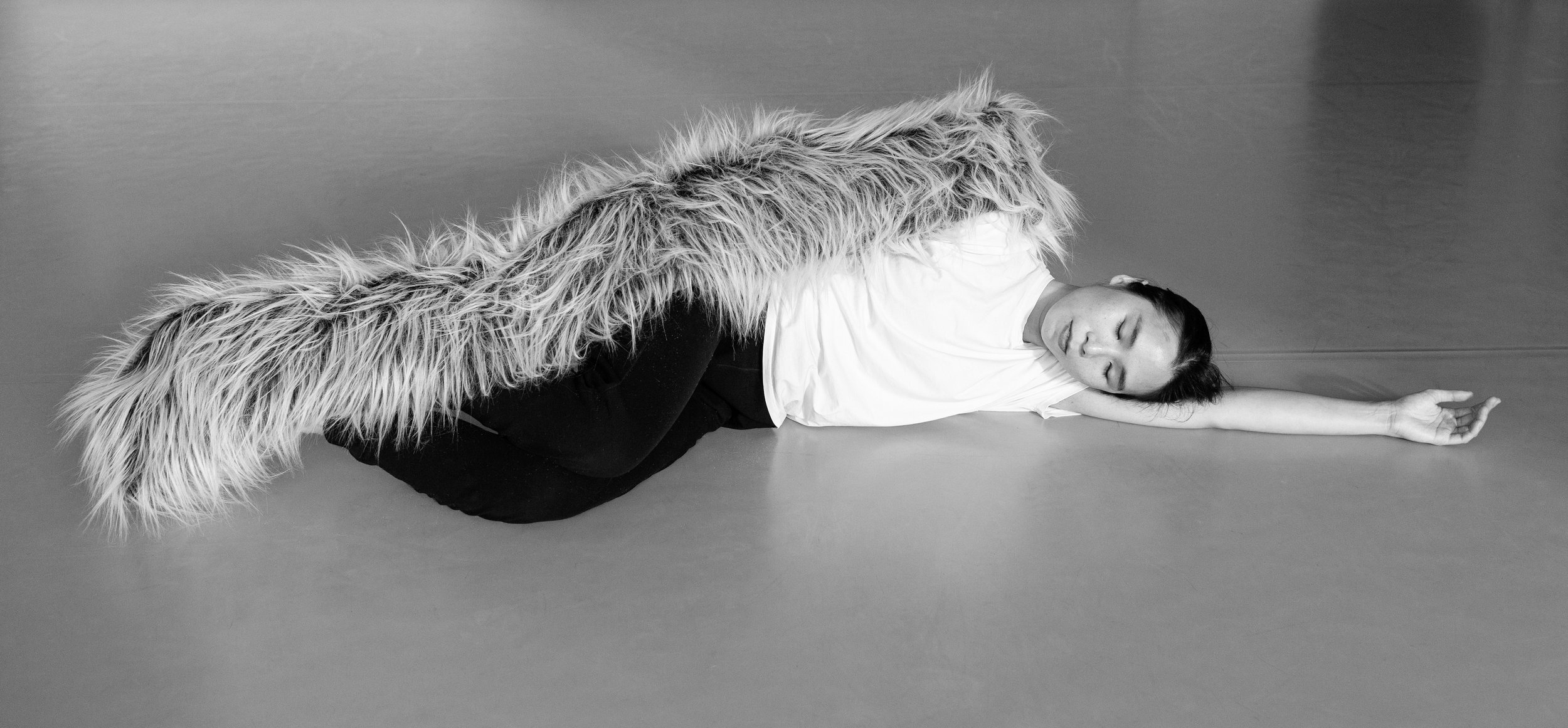
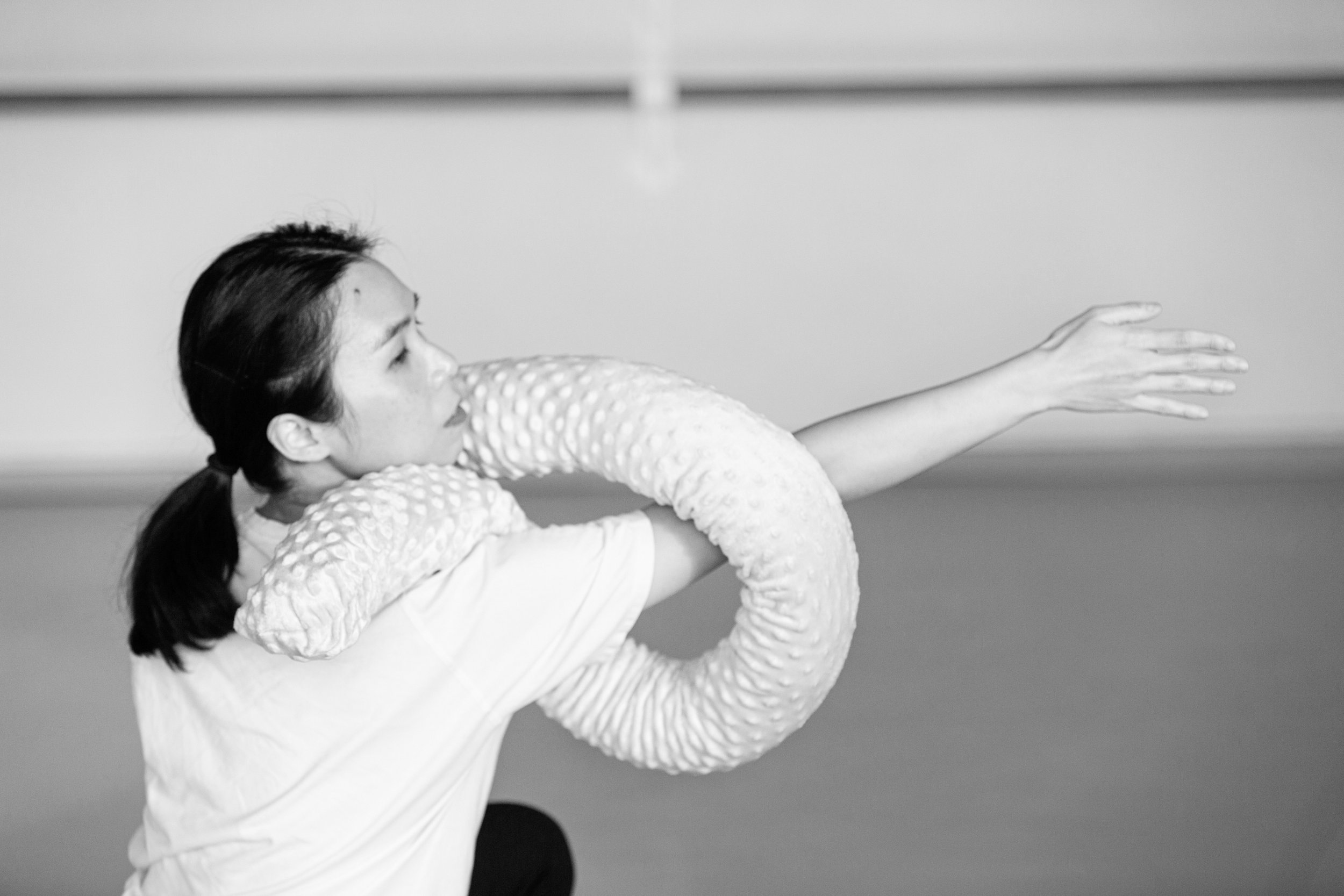




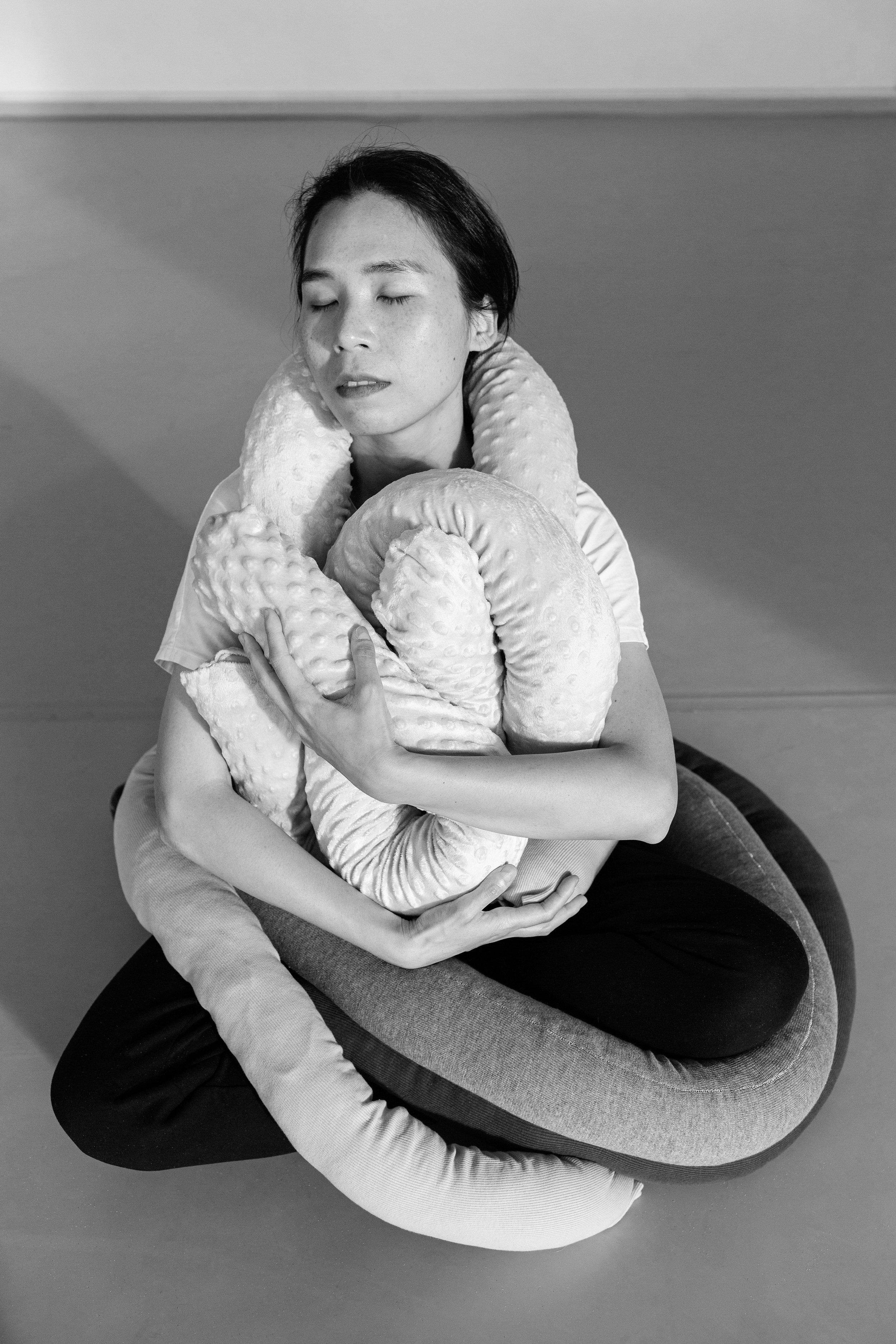
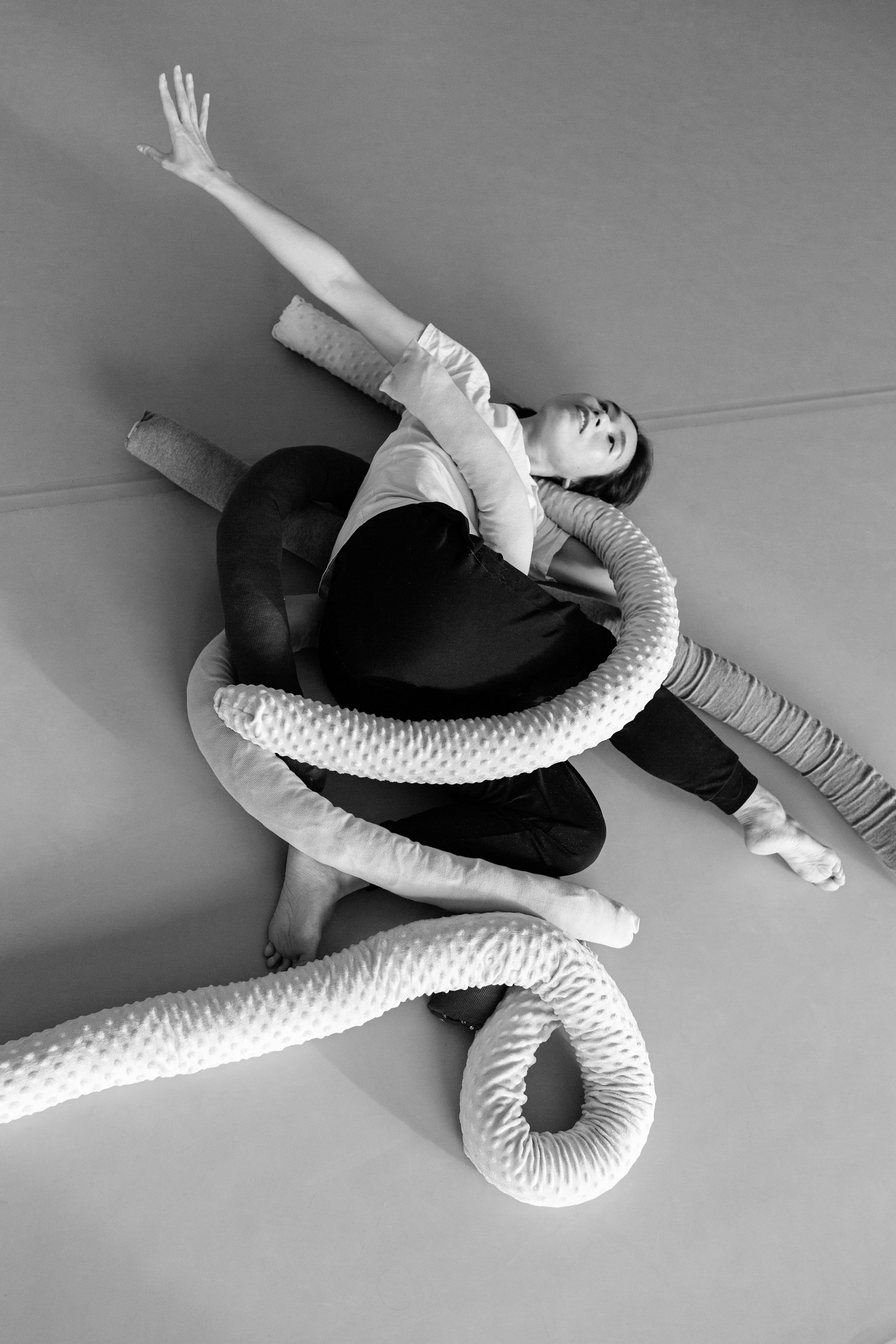


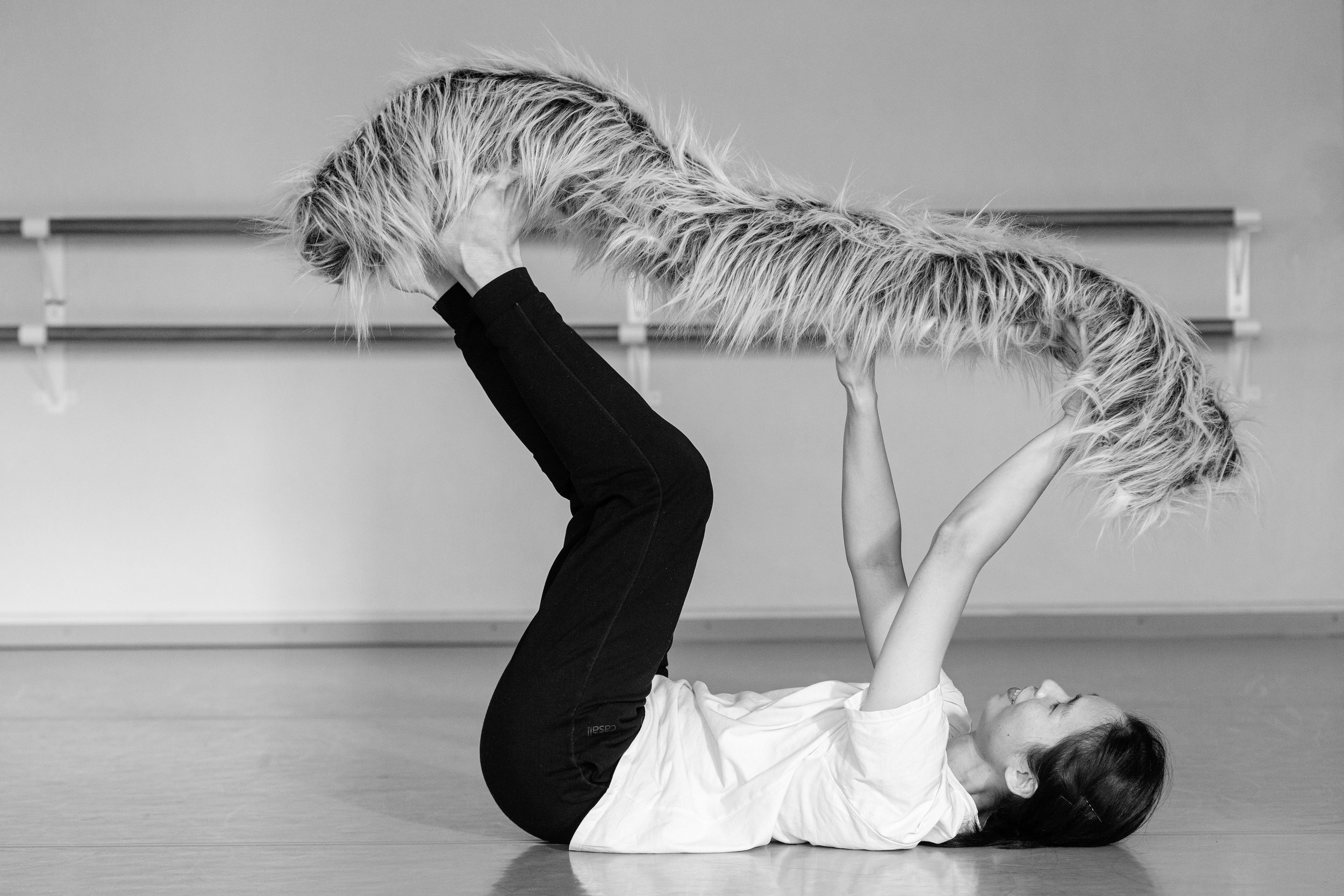
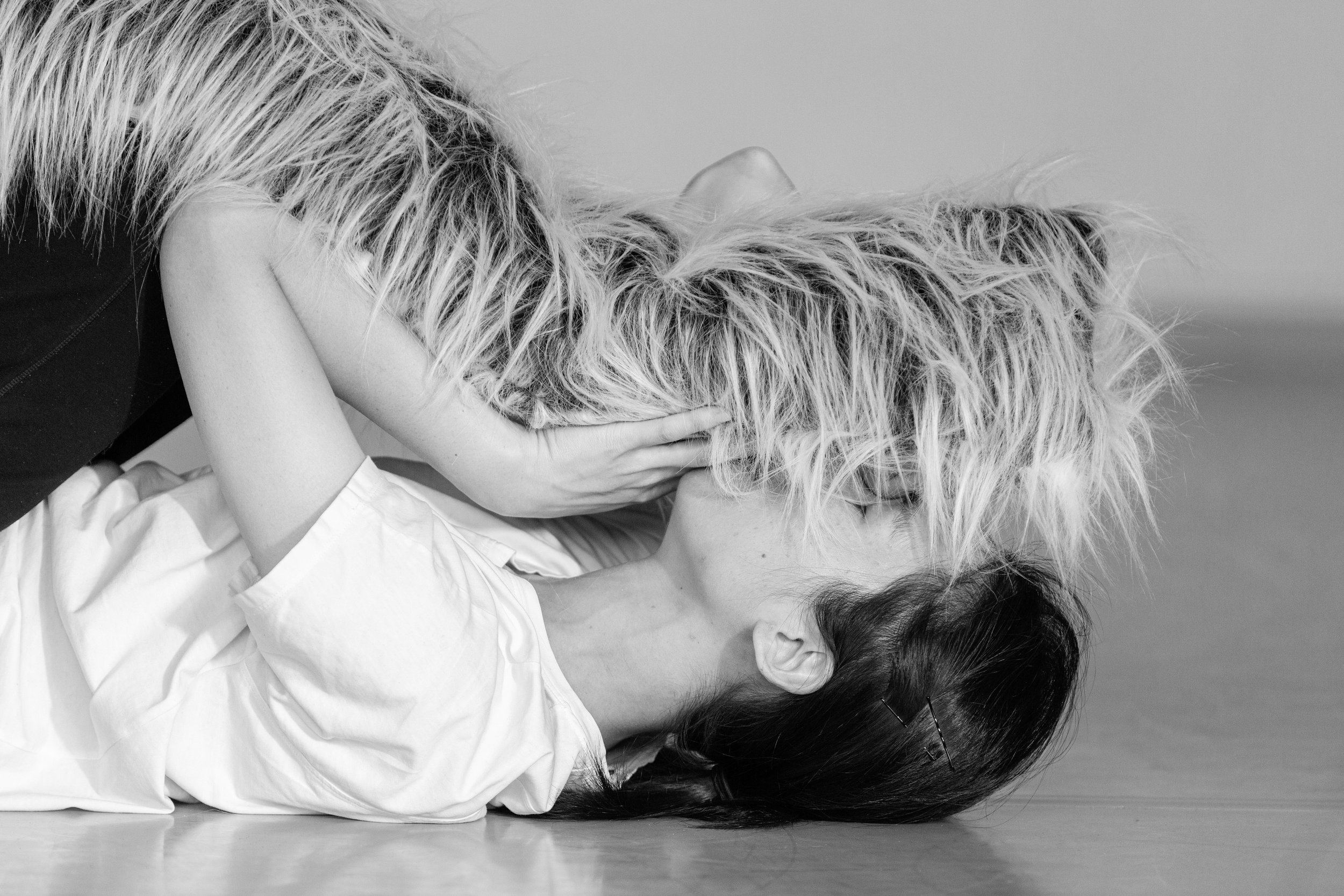
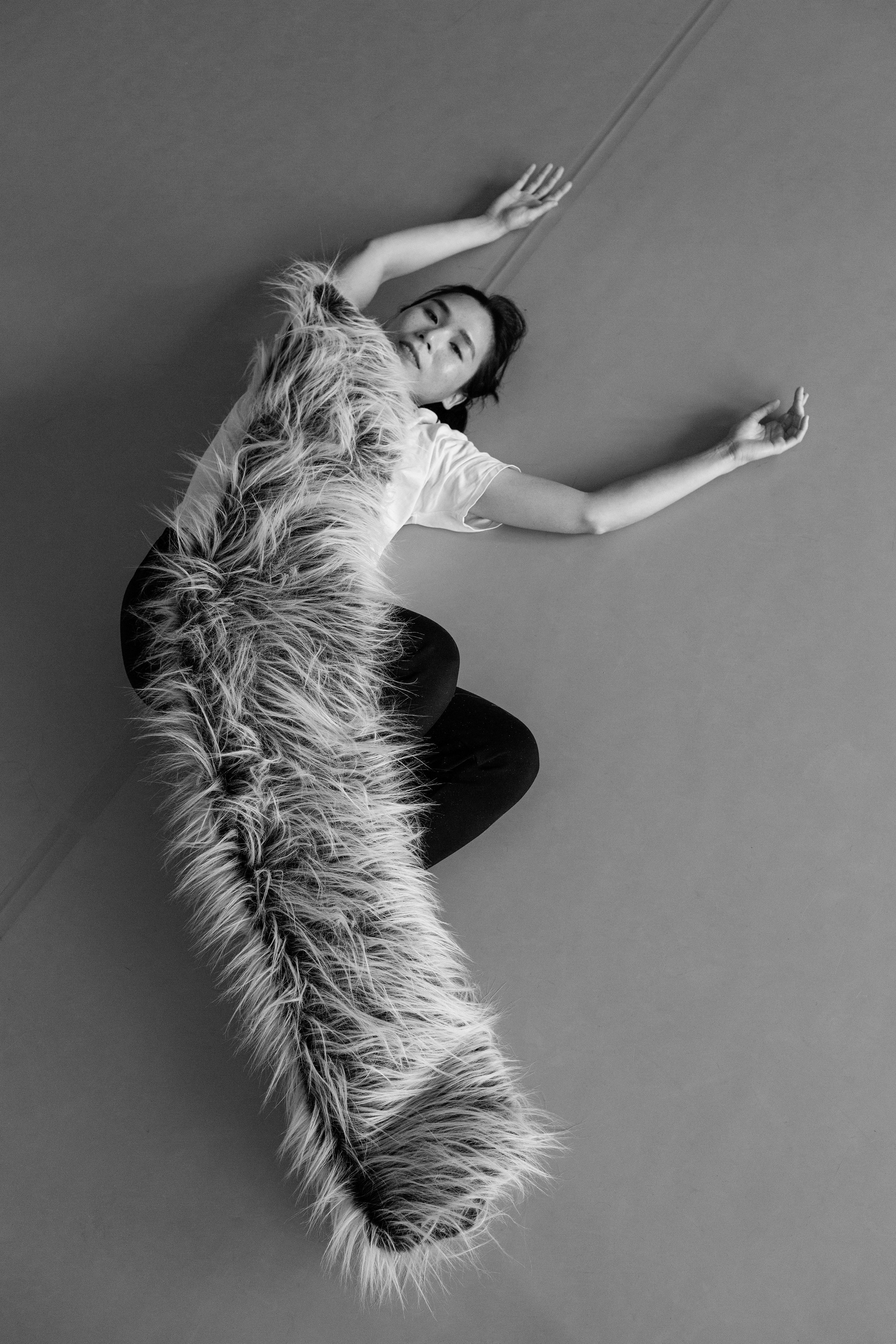
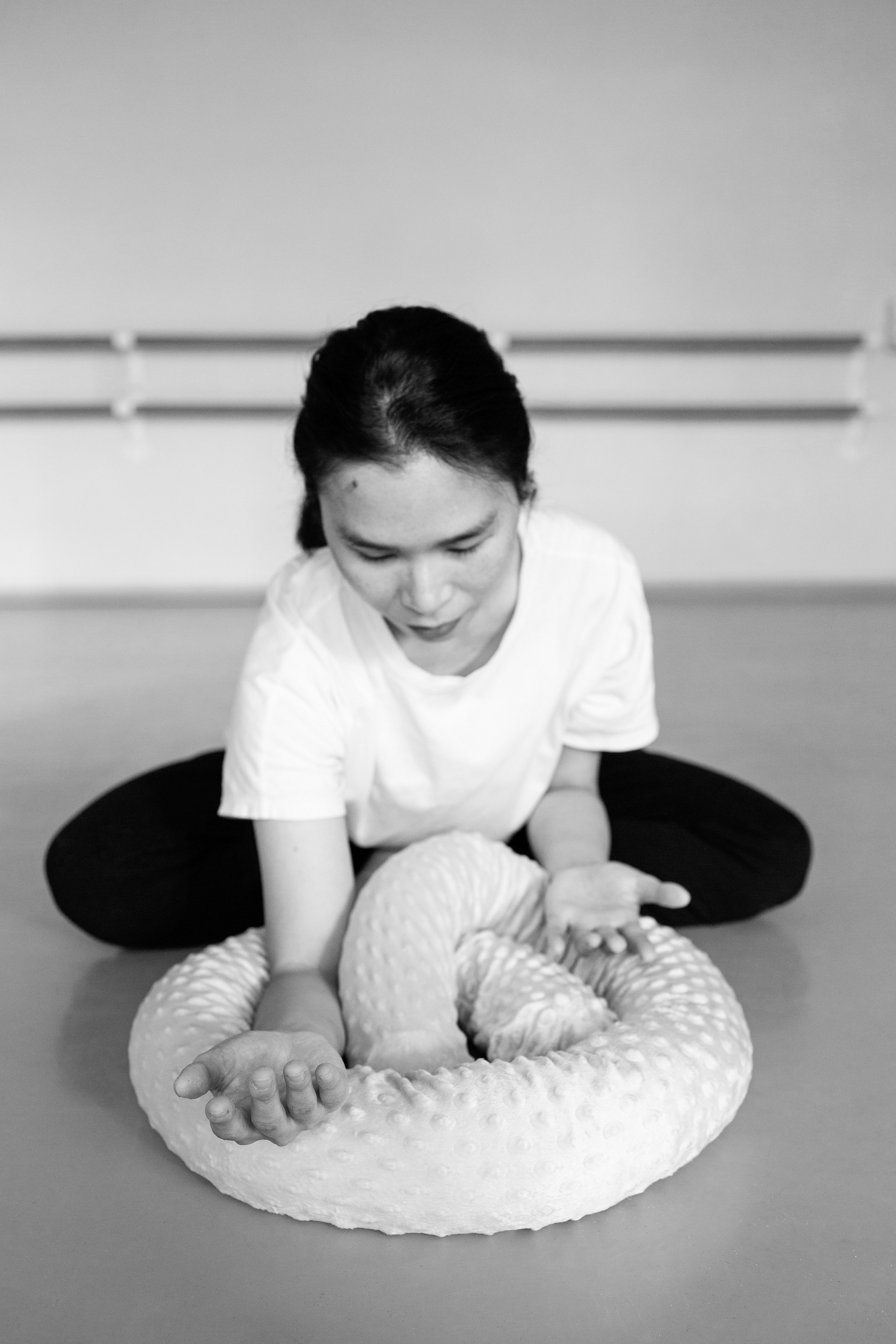
Photos: Mari Rostfeldt
Moving Awareables explores embodied relational care through somatic interactions with multi-sensorial textile wearables. The transdisciplinary project builds on practices and knowledge of embodiment (Cohen, 2012), Soma design (Höök, 2018), and relies greatly on the 1st-person perspective for design and research (Tomico et al., 2012). Through embodied interactions (Wilde et al., 2017) the project developed 3 iterations of soft close-to-body artefacts. While keeping a continuous loop of reflection between a movement artist and a design researcher, the project feeds embodied knowledge into the design research process. Moving Awareables expands the notion of sensorial clothing (Kuusk et al., 2019, 2020) by creating multi-sensorial artefacts for developing self and relational awareness.
The work explores interactive textile materials to transform moving experiences, by bringing attention to micro movements, sensations and emotions through touch. It fosters sensorimotor education to free inhibited movements and to develop physical and mental well-being (Juhan, 2003). Furthermore, the work looks into the role of multi-sensorial textiles and technology in nurturing such embodied awareness. It expands the current understanding of fashion, clothing and textiles, and promotes alternative experiential and supportive, caring and sustainable qualities for them.
Through participatory performance sharing, a set of soft forms with various textile surfaces and fillings is presented. Some of them offer an extra layer of tactile sensations through embedded sensors and motors. Participants can closely witness (Adler, 2022) the movement artist’s somatic interactions with the Awareables while being invited to explore the artefacts themselves. While the artefacts emerged from somatic movement research, the design outcome also aims for somatic experiences. Moving Awareables suggests the wearer moving and being moved by the artefacts. Through this process, becoming aware of oneself and own experiences (Merleau-Ponty, 1965).
For example, Awareable ‘Fluffy’ is filled with buckwheat husks. When being moved, the husks inside make sounds that slow down the wearer in order to listen and feel their body moving in relation to the sounds. Its furry surface and weight resting over the body, as if an animal, also creates a calming effect on the wearer. Awareable ‘Dark-grey-snake’ buzzes when a tilt sensor is moved, triggering the middle part of the tubular form to vibrate. Its material characteristics invite the wearer to touch, bend, wrap, shake, hold and squeeze the Awareable, making exploratory movements that expand their kinesthetic awareness to enhance the experience of self (Sheets-Johnstone, 2010).
The participatory performance guides the audience into a world of somatic experiences unfolded through interactions with the Awareables, making the participants rethink their understanding of clothing, textiles and fashion. It suggests materials as something not only to be worn but as subject with an agency (Abram, 1997) which holds and co-creates experiences with the wearer. The project proposes textiles and clothing people wear to pick up the role of a carer as it deepens the connection with self and others.
The project has been partially funded by the creative research support of the Estonian Ministry of Culture, with generous technical support from Kadi Kibbermann.
References:
Abram, D. (1996). The spell of the sensuous: Perception and language in a more-than-human world. Pantheon Books.
Adler, J. (2022). Intimacy in emptiness: An evolution of embodied consciousness. Inner Traditions.
Cohen, B. B., Nelson, L., & Smith, N. S. (2012). Sensing, feeling, and action: The experiential anatomy of body-mind centering® (Third edition). Contact Editions.
Höök, K. (2018). Designing with the body: Somaesthetic interaction design. The MIT Press.
Juhan, D. (2003). Job’s body: A handbook for bodywork (3rd ed). Barrytown/Station Hill.
Kuusk, K., Tajadura-Jiménez, A., & Väljamäe, A. (2020). Altering One’s Body-Perception Through E-Textiles and Haptic Metaphors. Frontiers in Robotics and AI, 7, 7. https://doi.org/10.3389/frobt.2020.00007
Merleau-Ponty, M., Landes, D. A., Carman, T., Lefort, C., & Merleau-Ponty, M. (2014). Phenomenology of perception (This ed. 1. publ. in paperback). Routledge.
Sheets-Johnstone, M. (2010). Kinesthetic experience: Understanding movement inside and out. Body, Movement and Dance in Psychotherapy, 5(2), 111–127. https://doi.org/10.1080/17432979.2010.496221
Tomico, O., Winthagen, V. O., & Van Heist, M. M. G. (2012). Designing for, with or within: 1 st , 2 nd and 3 rd person points of view on designing for systems. Proceedings of the 7th Nordic Conference on Human-Computer Interaction: Making Sense Through Design, 180–188. https://doi.org/10.1145/2399016.2399045
Wilde, D., Vallgårda, A., & Tomico, O. (2017). Embodied Design Ideation Methods: Analysing the Power of Estrangement. Proceedings of the 2017 CHI Conference on Human Factors in Computing Systems, 5158–5170. https://doi.org/10.1145/3025453.3025873
Publication:
Moving Awareables: Multi-Sensorial Artefacts that Care for Us
https://leida.artun.ee/en/issues/care-after-care/moving-awareables-multi-sensorial-artefacts-that-care-for-us